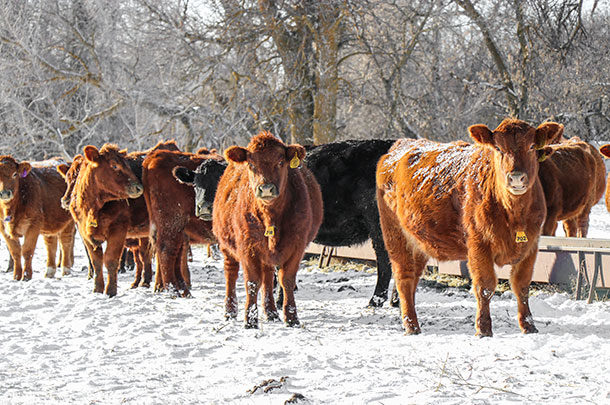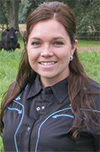If you are not familiar with body condition scoring, please reference this article from UNL: “Body Condition Scoring Beef Cows.”
So, at this point, you are likely thinking the title of this article is totally contradictory to everything you have ever been told about BCS, and that is not the case. Cattle are managed largely on a herd basis. While keeping individual records is applicable for many areas of management, nutrition is not one of them. We rarely are feeding cows on an individual basis and therefore can evaluate BCS on a herd basis.
When it comes to BCS our herds, let’s keep it simple and effective. Science has taught us, and common practices has confirmed, that a BCS 5 is optimal for productive cows. It is well understood that cows need to be at a BCS of 5 at calving to ensure they have adequate energy reserves to overcome the postpartum interval and rebreed to produce another calf within 365 days.
Late summer and early fall are the ideal times to begin BCS, which is convenient, being that is when most supplementation programs begin.
The strategy
Producers do not need to track the BCS of individual cows, as we do not manage or feed our cows on an individual basis, but as a herd. Therefore, it is not practical for producers to be keeping individual BCS data on their cattle. Plus, that would be a lot of work, and during the winter months, when it is most critical to track the BCS and evaluate our nutritional program, there is not a lot of time to add additional work.
So, how do you manage your herd without BCS each individual cow? On a biweekly basis, cattle producers should count the total number of cows with a BCS of 4 or lower. (If a cow is at a 5 or greater, we know she is good; we don’t need to adjust.) Remember that a BCS of 5 or higher is an adequate condition; therefore, by identifying the percentage of our herd that is at a BCS 4 or lower, we can evaluate our supplementation programs and the overall nutritional status of our herd. This should be done for each individual group of cows in your operation.
Tracking percentage change
Once you calculate the total percentage of cows in the herd at a BCS of 4 or lower, track the percentage change over time. This will allow you to see trends within each group. In addition, it will help to manage changes in BCS. Seeing cows begin to slip or lose condition can be difficult, especially when you are seeing those cows every day during the winter while feeding every day. By tracking the percentage change, producers can see those slight changes within their herd.
If young and mature cows are comingled within the same herd, it can be beneficial to BCS and track them separately to evaluate their success on a given supplementation program. In addition, in cases where they are running together through the winter, you may find a large percentage of your cows that are in a lower BCS to be the younger portion of you herd. A good benchmark to target is greater than 80% at a BSC of 5 or higher, with minimal animals at a BCS 3.
Body condition scoring is a great tool. While many producers BCS their herds on a regular basis informally, by simply tracking the percentage change over the winter supplementation months, it is easy to evaluate your feeding program, project breed-back following calving and manage your herd’s condition. ![]()

-
Kalyn Waters
- Agricultural Agent
- University of Florida Extension
- Email Kalyn Waters
PHOTO: Producers do not need to track the BCS of individual cows, as we do not manage or feed our cows on an individual basis, but as a herd. Photo provided by Kalyn Waters.









